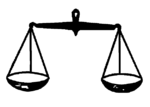Shiromani Akali Dal
Shiromani Akali Dal | |
|---|---|
 | |
| President | Sukhbir Singh Badal |
| Lok Sabha leader | Prem Singh Chandumajra |
| Rajya Sabha leader | Naresh Gujral |
| Founded | 14 October 1987 |
| Headquarters |
Block #6, Madhya Marg Sector 28, Chandigarh |
| Student wing | Student Organisation of India [1] (SOI)[2] |
| Youth wing | Youth Akali Dal |
| Ideology |
Punjabiyat[3] Punjabi nationalism[4] Conservatism[5] |
| Political position | Right-wing |
| Colours | Orange |
| ECI Status | State Party[6] |
| Alliance | National Democratic Alliance |
| Seats in Lok Sabha |
4 / 545 [7](currently 530 members + 1 Speaker)
|
| Seats in Rajya Sabha |
3 / 245
|
| Election symbol | |
 | |
| Website | |
|
www | |
The Shiromani Akali Dal (SAD), (translation: Supreme Akali Party) is a political party in India. There are a large number of parties with the name "Shiromani Akali Dal". The party recognised as "Shiromani Akali Dal" by the Election Commission of India is the one led by Sukhbir Singh Badal. It controls Sikh religious bodies Shiromani Gurudwara Prabandhak Committee, Delhi Sikh Gurdwara Management Committee and is the largest and most influential Sikh political party worldwide. The basic philosophy of Akali Dal is to give political voice to Sikh issues and it believes that religion and politics go hand in hand. Shiromani Akali Dal is part of BJP led NDA.
History
Akali Dal was formed on 14 December 1987 as a task force of the Shiromani Gurudwara Prabandhak Committee, the Sikh religious body. The Akali Dal considers itself the principal representative of Sikhs. Sardar Sarmukh Singh Chubbal was the first president of a unified proper Akali Dal, but it became popular under Master Tara Singh.
In the provincial election of 1937, the Akali Dal won 10 seats. The Khalsa Nationalists won 11 seats and joined the coalition government headed by the Unionist leader Sikander Hyat Khan. The Akalis sat in opposition and made occasional forays into reaching an understanding with the Muslim League, which never reached fruition.[8]
In the provincial election of 1946, the Akali Dal won 22 seats and joined the coalition government headed by the Unionist Khizar Hayat Khan Tiwana, along with the Indian National Congress. The Muslim League was unable to capture power, despite having won the largest number of seats, which perhaps suited it fine as it strengthened its Pakistan demand. The Muslim League launched a civil disobedience campaign, bringing down the Tiwana government by March 1947. The rest of the period till Indian independence was filled by Governor's Rule.[9]
This party was never ever involved in any kind of Sikh struggle
Present political position
The previous Punjab government was formed by Akali Dal in partnership with its regional and national ally Bharatiya Janata Party (BJP). It had 59 members in Punjab Legislative Assembly and combined with 12 of BJP, formed a majority government. Party patron and ex-president Parkash Singh Badal was the Chief Minister of Punjab and the party president Sukhbir Singh Badal was deputy-chief minister. The party lost the elections held on 04th February 2017. Currently the party has 15 MLAs in the 117 seat Punjab Assembly. The party has 4 members in the Lok Sabha. Party's main political opponent is Indian National Congress. In the recent Delhi Assembly elections it did not retain the one seat it held in 2013 elections.
Party presidents
Following is the list of presidents of the party as given on party website.
Punjab Chief Minister belonging to Akali Dal
- Parkash Singh Badal (27 March 1970 – 14 June 1971)
- Parkash Singh Badal ( 20 June 1977 – 17 February 1980)
- Parkash Singh Badal (12 February 1997 – 26 February 2002)
- Parkash Singh Badal (1 March 2007 – 16 March 2017)
In general elections
|- style="text-align:center;"
|| Indian general election, 1996
|| 11th Lok Sabha
|| 8
|| ![]()
![]()
![]()
![]()
![]()
![]()
![]()
In state elections
Punjab
Haryana
Delhi
See also
References
- ↑ "SOI".
- ↑ "SOI Clash". Retrieved 25 April 2014.
- ↑ "SAD aims to widen reach, to contest UP poll". The Tribune. Chandigarh. 8 October 2015. Retrieved 8 October 2015.
- ↑ Pandher, Sarabjit (3 September 2013). "In post-Independence India, the SAD launched the Punjabi Suba morcha in the 1960s, seeking the re-organisation of Punjab on linguistic basis". The Hindu. Retrieved 15 September 2015.
- ↑ Grover, Verinder (1996). Encyclopaedia of India and Her States: Himachal Pradesh, Jammu & Kashmir and Punjab, Volume 4. Deep & Deep. p. 578.
- ↑ "List of Political Parties and Election Symbols main Notification Dated 18.01.2013" (PDF). India: Election Commission of India. 2013. Retrieved 9 May 2013.
- ↑ "Members: Lok Sabha". loksabha.nic.in. Lok Sabha Secretariat. Retrieved 19 October 2018.
- ↑ Jalal, The Sole Spokesman 1994, p. 23, 97.
- ↑ Talbot, Pakistan: A Modern History 1998, p. 74.
Bibliography
- Jalal, Ayesha (1994) [First published 1985], The Sole Spokesman: Jinnah, the Muslim League and the Demand for Pakistan, Cambridge University Press, ISBN 978-0-521-45850-4
- Jalal, Ayesha (2002), Self and Sovereignty: Individual and Community in South Asian Islam Since 1850, Routledge, ISBN 978-1-134-59937-0
- Talbot, Ian (1998), Pakistan: A Modern History, St. Martin's Press, ISBN 978-0-312-21606-1
- Harjinder Singh Dilgeer. Sikh Twareekh. Sikh University Press, Belgium, 2007. 5 volumes (in Punjabi)
- Harjinder Singh Dilgeer. Sikh History. Sikh University Press, Belgium, 2010-11. 10 volumes
- Harjinder Singh Dilgeer. Shiromani Akali Dal (1920-2000). Sikh University Press, Belgium, 2001.